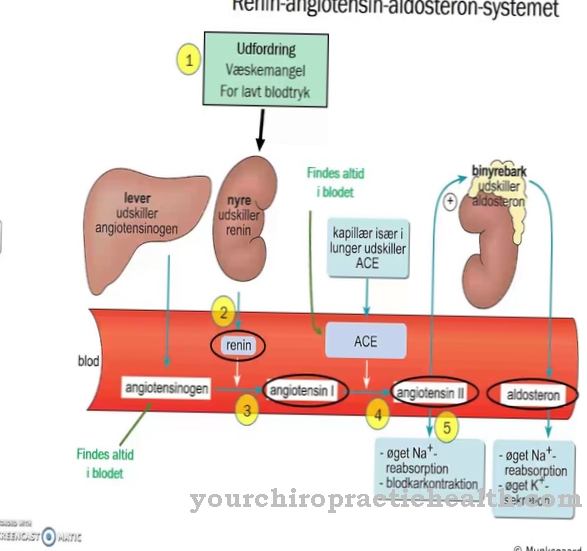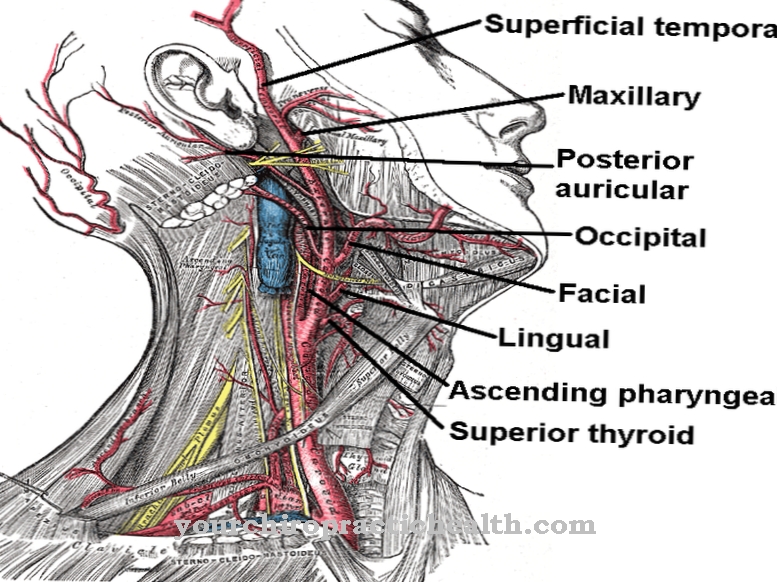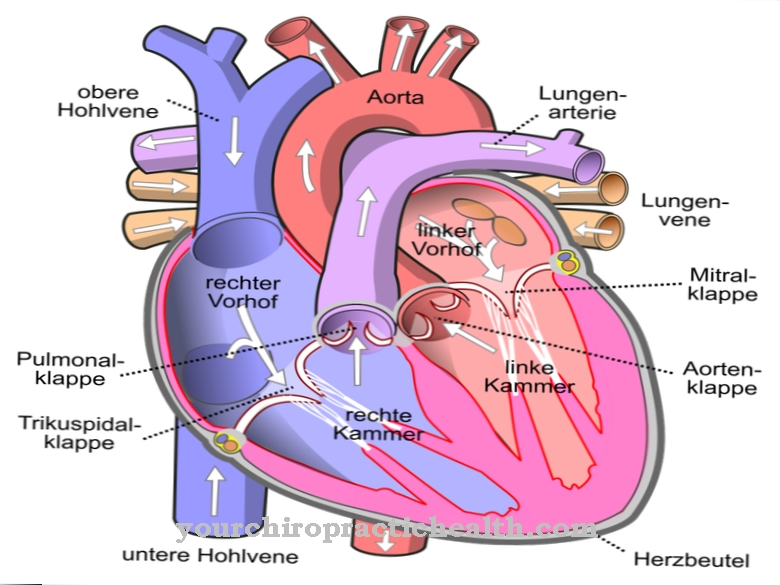Of the neck is a region in the human body that has different structures and viscera: from bones and cartilage, to muscles and tendons, arteries and veins to glands. The interaction of all forms is important for human wellbeing.
What is the neck
The connection between the head and body of a person is known as the neck (lat. Collum). The spine runs through the neck and ensures that the head can move. In addition, a variety of tissue structures are bundled in the neck, which, with their functions, are essential for the human movement, respiratory, digestive and endocrine systems.
In order to be able to fulfill its tasks, the neck is not very well protected compared to other parts of the body: only skin and a thin layer of muscle cover the spine and the neck organs. This makes the neck a sensitive and vulnerable place in the human body. Many people feel the impulse to give him special protection. It is not without reason that killing techniques begin precisely at this point. Even a little pressure in the neck region has a great negative effect.
Anatomy & structure
The neck begins on the head with the lower edge of the jaw. On the side near the torso, the sternum and collarbone are the limit. The back part of the neck is defined by the spine: It goes from the 7th cervical vertebra to the atlas - the first and skull-bearing cervical vertebra (C1).
The back of the neck is known as the nape of the neck. In addition to the spine, there are important supply lines of the human body in the neck. The main artery aorta, the vagus nerve, the esophagus and the trachea are worth mentioning. The windpipe connects directly to the larynx; the esophagus runs closely behind it.
This means that the air and food supplies cross in the throat. The vocal cords have their place within the larynx. Outside, at a very short distance - below his thyroid cartilage - is the thyroid gland. This gland, which is important for the human endocrine system, is also part of the neck. The same applies to the tonsils and lymph nodes, which in turn belong to the lymphatic system.
Function & tasks
The spine ensures the mobility of the head. Humans breathe through the windpipe, and food can be transported through the esophagus to the stomach. The larynx has two different functions. On the one hand, he closes the windpipe with the epiglottis when swallowing so that the airways are not impaired when eating.
On the other hand, the vocal cords located in the larynx are the basis for voice training and speaking. Whether singing, screaming or speaking - without the larynx, sound formation would not be possible. The human metabolism is significantly influenced by the thyroid gland. The thyroid gland produces the hormones L-thyroxine (also tetraiod-L-thyronine) and triiodothyronine - both of which are vital.
In addition, the thyroid hormones are closely related to the effects of other hormones. They influence cell metabolism (e.g. oxygen consumption) and energy metabolism (the conversion of fats, carbohydrates and proteins), the cardiovascular system and the gastrointestinal tract.
other home remedies ↵ for a sore throat Important components of the human immune system can also be found in the throat. The tonsils (or tonsils) are integrated into the lymphatic ring of the pharynx. The entrance to the trachea and esophagus is a region that requires special protective measures. An accumulation of lymph nodes in the neck area also contributes to the immune defense.
You can find your medication here
➔ Medicines for sore throats and difficulty swallowingIllnesses & ailments
If people can only move their whole body instead of their head, the diagnosis "stiff neck" is easy. Limitations in the mobility of the neck can be acute or have manifested themselves as chronic. If the cause is an overload of the muscles or the result of postural problems, movement exercises will quickly provide relief.
Wear and tear on the bones shows similar symptoms but is less easy to treat. The findings are also acute or chronic if the larynx or the larynx lining is inflamed. Affected people suffer from hoarseness and cough. If the lining of the larynx is very swollen, it can even cause breathing difficulties. The most common ailments of the throat that everyone has probably experienced before are sore throats. This could be a harmless cold or symptoms of tonsillitis.
Signs of infection are swollen lymph nodes and difficulty swallowing. If home remedies (gargling) and throat lozenges can help with a cold, a visit to a doctor and - often associated with this - the use of antibiotics is essential when diagnosing tonsillitis. The thyroid causes problems due to both over and underactive functions. Since these processes are normal in the early stages, deviations can only be determined using a blood count. If malignant tumors develop in the throat, most of the cases are larynx cancer.



























